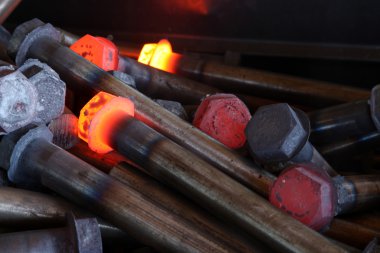As reported by IQS Directory in their article “Heat Treating,” heat treatment involves heating a material and cooling it to improve its performance, strength, and overall properties. This process is often applied to metals to either enhance their malleability or increase their hardness, making them suitable for various applications across industries.
Heat treatment techniques vary based on factors such as temperature, cooling rates, and quenching methods. Proper control over these variables is essential for achieving the desired metal characteristics, whether it’s improving toughness, machinability, or resistance to wear. The process typically involves three stages: heating, soaking, and cooling. In the heating stage, metals must be heated uniformly to prevent warping or cracking. The soaking stage ensures the metal is held at a specific temperature for a set time to achieve structural uniformity. Finally, the cooling stage—often involving quenching—controls the rate at which the metal is brought to room temperature, further affecting its properties.
Click here to learn more about Advanced Technical Products capabilities or products.
Article with all rights reserved, courtesy of iqsdirectory.com



